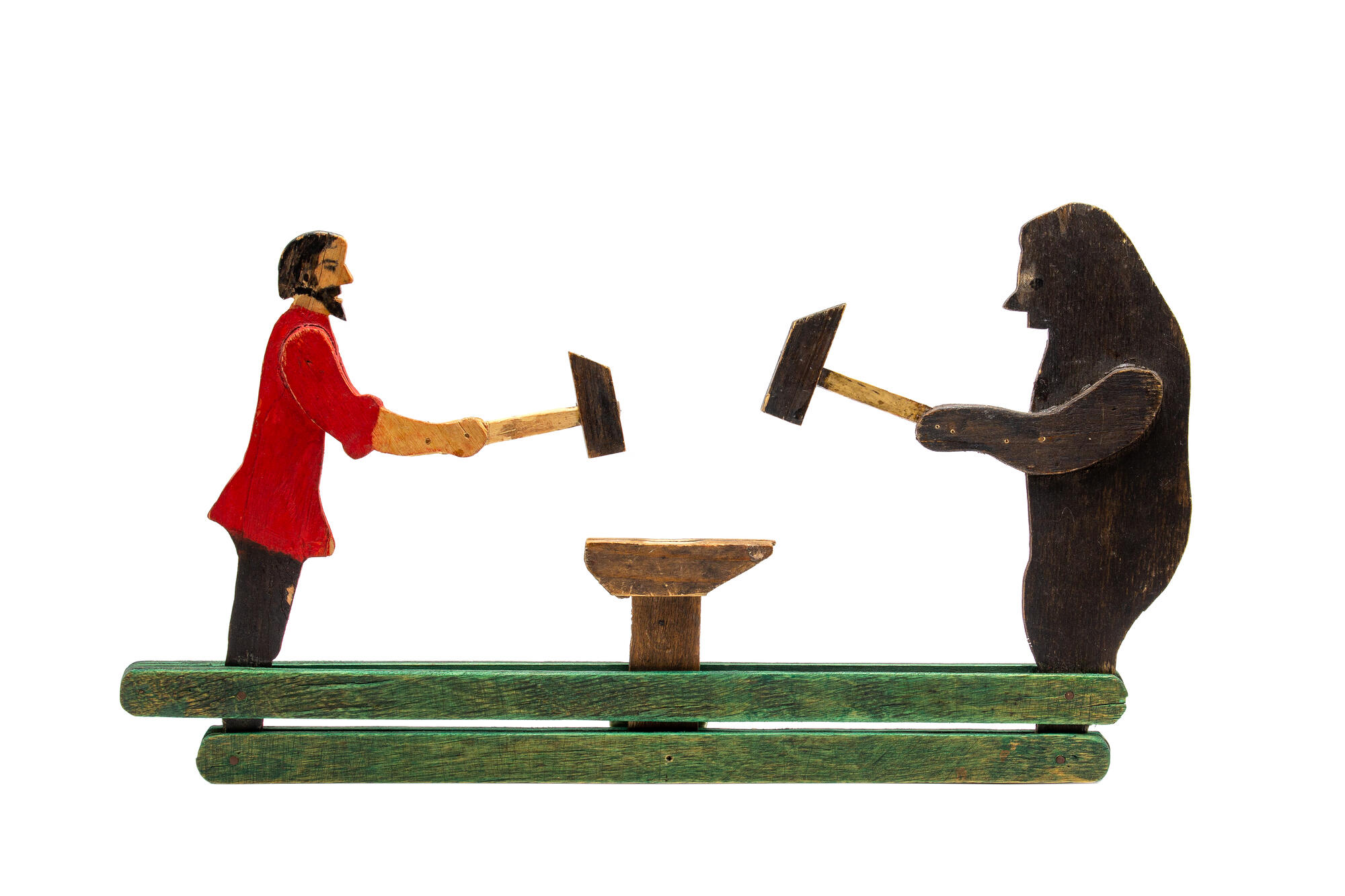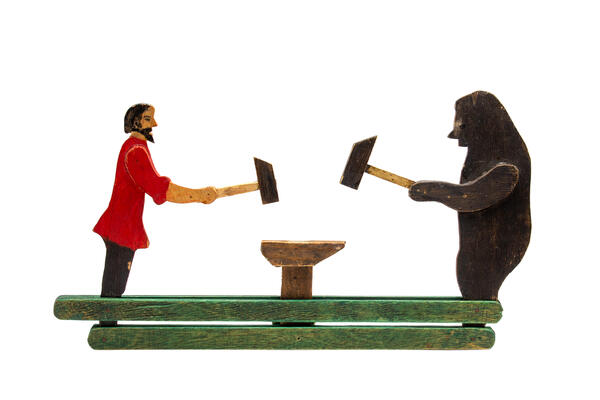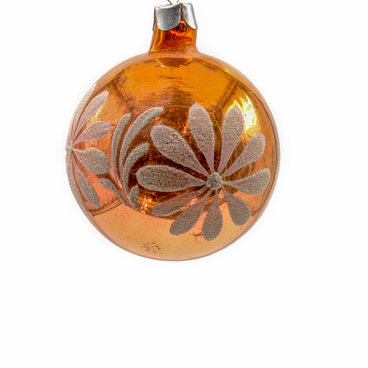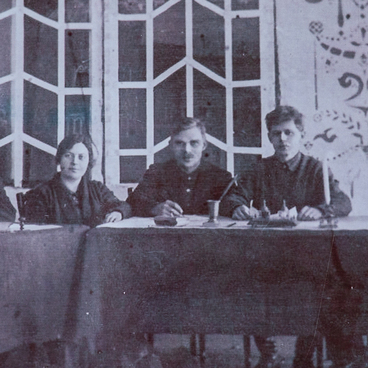A wooden composition called ‘Man and Bear’, or ‘Blacksmiths’ is considered one of the most famous traditional Russian toys. It first appeared in the Bogorodskoye settlement of the Moscow region — the center of handmade wooden toys since the 17th century — over 300 years ago.
According to a legend, the first Bogorodsk toy was made by a local woman to entertain her children. She called it ‘auka’ — what forest spirits were called in the folklore. Eventually, the children lost interest in the toy, so their father took it to the fair to sell. There, it caught the eye of a merchant, who purchased it and placed the toy in his store for decoration. It was soon bought from the merchant, so he decided to place a big order to sell some more. That is how the production of these mechanical toys came about.
At first, the toys were mainly made to order by peasants, who carved them outside working hours at the field. The better the wood was, the higher the quality of the toys turned out. That is why only wood without dots and knags was used to create toys for sale, while chips and rest pieces served for making figurines to use at home. Over time, the popularity of the Bogorodsk toy increased to the extent of opening workshops designated solely for their production.
The ‘Blacksmiths’ toy’s mechanism is quite simple: from moving the levers on which they are fixed, the man and bear take it in turns to hammer on the anvil between them.
In past centuries, there were other toys that used the same mechanism, for example, a variation of the man and bear sewing a tree or chopping wood, as well as a hare eating a carrot, hens pecking grains, and a cat-fisherman striking a fish.
Any woodcarver could make a moving toy by using a knife to divide a wooden poppet into several parts. Then it would take a fine effort to carve figures and other small elements.
In the olden days, wood was most often used to make figures of people and animals, as well as characters of folk tales and stories. Usually, they had a symbolic meaning. For example, a goat represented the good and was considered the patron of harvest. A ram and a cow symbolized fertility, while a deer granted abundance and successful marriage.
According to a legend, the first Bogorodsk toy was made by a local woman to entertain her children. She called it ‘auka’ — what forest spirits were called in the folklore. Eventually, the children lost interest in the toy, so their father took it to the fair to sell. There, it caught the eye of a merchant, who purchased it and placed the toy in his store for decoration. It was soon bought from the merchant, so he decided to place a big order to sell some more. That is how the production of these mechanical toys came about.
At first, the toys were mainly made to order by peasants, who carved them outside working hours at the field. The better the wood was, the higher the quality of the toys turned out. That is why only wood without dots and knags was used to create toys for sale, while chips and rest pieces served for making figurines to use at home. Over time, the popularity of the Bogorodsk toy increased to the extent of opening workshops designated solely for their production.
The ‘Blacksmiths’ toy’s mechanism is quite simple: from moving the levers on which they are fixed, the man and bear take it in turns to hammer on the anvil between them.
In past centuries, there were other toys that used the same mechanism, for example, a variation of the man and bear sewing a tree or chopping wood, as well as a hare eating a carrot, hens pecking grains, and a cat-fisherman striking a fish.
Any woodcarver could make a moving toy by using a knife to divide a wooden poppet into several parts. Then it would take a fine effort to carve figures and other small elements.
In the olden days, wood was most often used to make figures of people and animals, as well as characters of folk tales and stories. Usually, they had a symbolic meaning. For example, a goat represented the good and was considered the patron of harvest. A ram and a cow symbolized fertility, while a deer granted abundance and successful marriage.



